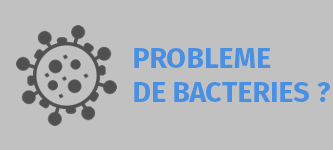| » » » |
Que recherchez-vous ?
What is a reverse osmosis membrane used for?
The reverse osmosis membrane is installed only in reverse osmosis filters. It is not used in other water treatment models. The main task of the membrane is molecular purification. It has small pores (0.001 microns), thanks to which it retains absolutely all impurities. Only water and oxygen molecules pass through it - nothing else.
Reverse osmosis filters are both simple and complex. Humanity is familiar with the package The process of osmosis - that is, the penetration of water through the semi-terminal, but it was possible to pack this feature in everyday life.
Reverse osmosis filters became truly accessible, already in the 2000s, becoming a safe way to purify drinking water from natural properties (high hardness) and the results of industrial and practical human activities.
Reverse osmosis membranes, made from a special class of materials, have the ability to bind exclusively to water molecules and "drive" them. Other impurities are not captured by this process. If the pressure is applied from the conduit side, the water without impurities will decrease. The process list is not fast, the reverse osmosis filter needs a tank to collect the clean water.
There are no pores in a reverse osmosis membrane. The process of water molecules passing through a membrane is similar to how current is passed through a metallic conductor.
The difference between reverse osmosis and cartridge filters
Cartridge filters (sometimes they are not quite correctly called flow filters) and reverse osmosis filters give different results in purifying source water.
Cartridge filters less efficiently remove impurities such as organic compounds, nitrates and nitrites. Without special softening treatment, they are powerless to remove scale. If you add an ion exchange treatment, you can soften the water, but with a time limit, because the life of this cartridge depends on the starting rate. Depending on the size, such treatment should be replenished every 1-3 months using salt.
The difference between distillation and reverse osmosis
Comparing these two water purification methods is completely incorrect. Distilled water can simply be quite "dirty", because evaporation, although it perfectly removes salts, will not be able to remove organic impurities from water with a boiling point below 100 °C. This is why reverse osmosis is a much more reliable process in terms of eliminating substances hazardous to health.
Does reverse osmosis give "dead" water?
Modern science has no proof of the existence of dead or living water, but the high degree of purification after a reverse osmosis filter can be achieved if the water removes calcium from the body.
From the point of view of the processes that take place in the organism, the purest water is the best suited, since its function is to be a medium in which reactions take place, but not a food from which we obtain constituent elements.
What impurities are removed by a reverse osmosis membrane?
A reverse osmosis membrane can remove a variety of impurities including ions, bacteria, viruses, suspended particles and dissolved salts. Organic contaminants such as pesticides, herbicides and industrial chemicals can also be retained by a reverse osmosis membrane.
However, the ability of a reverse osmosis membrane to effectively remove these impurities depends on many factors, such as particle size, ionic charge, temperature, and pressure. Incoming water quality, contamination levels and operational conditions can also affect membrane performance.
In general, reverse osmosis membranes are designed to remove contaminants from water to improve the quality of drinking water and industrial water.
What you need to understand when choosing the type of filtering
Reverse osmosis filters were created to deal with hard and salty drinking water. Therefore, if you are tired of the constant fight against scale and do not recognize your favorite type of tea or coffee when brewed in hard water, choose a model from this category of filters.
Of all the home filtration options, membrane filters are the most effective not only at fighting scale, but also at separating harmful impurities, especially nitrates and nitrites, which sorption cannot handle. Therefore, even if limescale does not bother you, but you regularly order water for drinking and cooking or buy it in a store, a reverse osmosis filter will completely cover this need. Only much cheaper.
Advantages of the membrane element
Reverse osmosis is one of the most modern, efficient and reliable water purification systems. In many ways, its capabilities are due to the presence of a synthetic membrane capable of retaining up to 98% of impurities.
Industrial osmosis allows you to get rid of most contaminants, from nitrates and pesticides to magnesium and calcium salts. In addition, fluorides, iron, lead and arsenic do not cross the membrane. The output is clean, potable water, which can be used in production conditions, including for cooling equipment, preparing various working solutions, etc.
Product performance is determined by material properties. The thin-layer polyamide composite has a semi-permeable structure. Its lower layer is porous (usually it is polysulfone or polyethersulfone), the upper layer is dense polyamide. The composite is permeable to water molecules and provides a reliable barrier against various types of sediment, from heavy metals to hardness salts.






























































